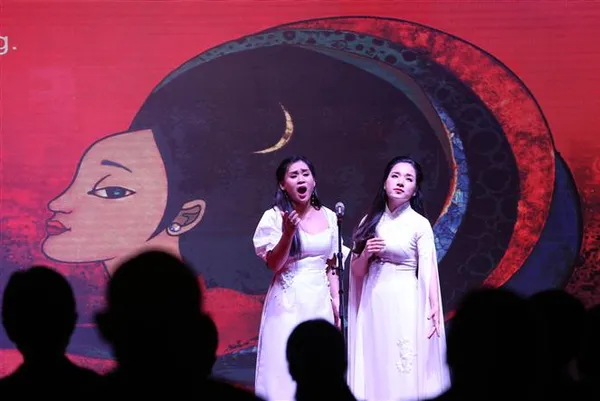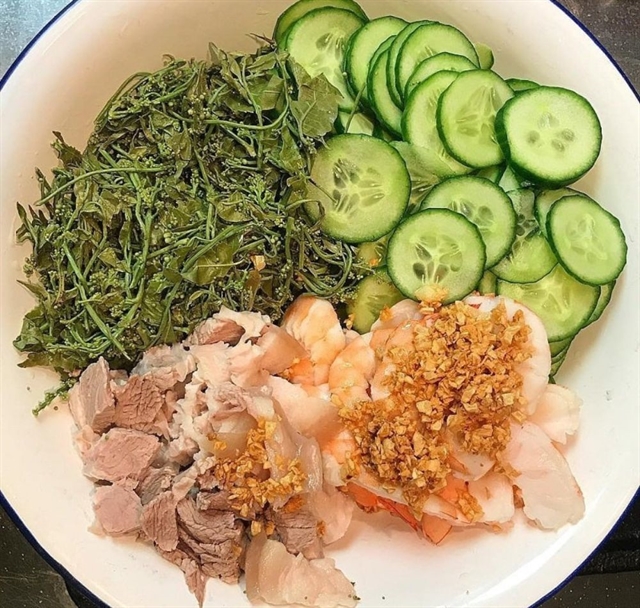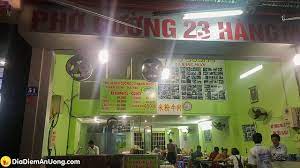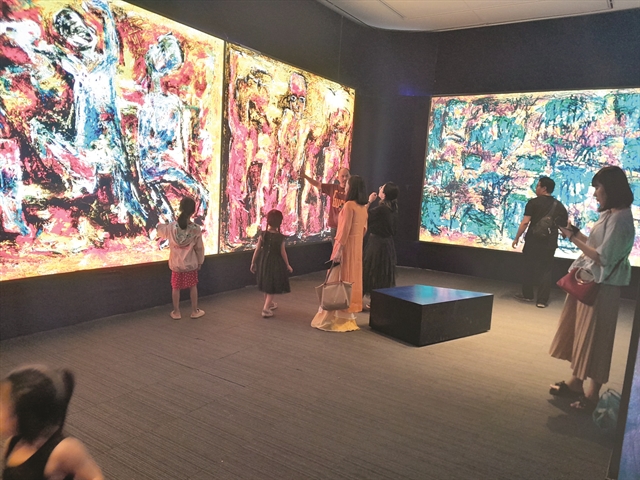
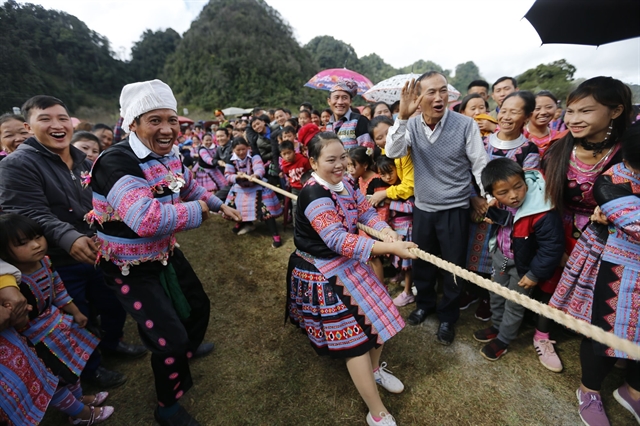 |
| Visitors take part in the Mông ethnic group's traditional games during the Gầu Tào festival in Hòa Bình Province. VNA/VNS Photo Trọng Đạt |
HÒA BÌNH — Hòa Bình is well-known not just for beautiful landscapes, but also for the distinct cultural traditions of its ethnic population.
The northern mountain province has, through time, established itself as a leading example of how to successfully combine tourism growth with the preservation of the cultural heritage of ethnic minorities.
Folk melodies, gong art, Mo Mường culture, and epic Mường are only a few elements of the artistic and cultural qualities preserved and disseminated from this area, which has earned its reputation as the cradle of the Mường ethnic group.
The province is also home to 786 intangible cultural heritages, including 10 ethnic spoken and written languages, 154 pieces of folk literature, 171 folk performing arts, 113 social practices, 26 crafts, and 268 documents of folk knowledge.
The ethnic cultural values of Hòa Bình have aided the growth of tourism, a key sector in the province's development.
In 2019, the province hosted about 3.2 million visitors, including over 400,000 international tourists.
In 2020, despite the significant impact of the COVID-19 outbreak, Hòa Bình welcomed nearly 1.9 million visitors.
The overall number of tourists visiting Hòa Bình this year is expected to reach 2.58 million, representing an almost 100 per cent increase over the same period in 2021.
Provincial Department of Culture, Sports, and Tourism Deputy Director Lưu Huy Linh believes that in order to effectively preserve and promote the cultural heritage of ethnic minorities, it is necessary to take advantage of favourable domestic and international opportunities to renew tourism products and services, developing high-quality tourism products that carry the specific characteristics of Hòa Bình.
Linh argues that the research and identification of the artistic, aesthetic, scientific, historical, and cultural values of ethnic groups' cultural heritages, as well as promoting and educating about the relevance and benefits of cultural heritage, should be prioritised.
Developing tourism products and services is associated with historical and cultural values while professionalising the tourism destination brand of Hòa Bình Province is associated with the historical and cultural values of Mường Hòa Bình area. These will contribute to tourism becoming the province's foremost economic sector, he adds.
In order to successfully conserve and promote the value of cultural heritage, the Provincial Party Committee's Standing Board issued a resolution on preserving and promoting the value of ethnic minorities' cultural heritages in Hòa Bình Province from 2021 to 2025, with an eye toward 2030.
According to this resolution, by 2025, 50 per cent of the intangible cultural heritage of ethnic groups in Hòa Bình will be inventoried, collected, and documented, with 10 heritages being documented and proposed for recognition and inclusion in the list of cultural heritage, and 80 per cent of the intangible cultural heritage of ethnic groups in the province being preserved in the list of national intangible cultural heritage.
The province also sets an aim of investing in five models of conserving traditional villages and cultural villages related to community tourism development by 2025 and 50 per cent of Hòa Bình Province's intangible cultural heritage of ethnic groups introduced and promoted for tourist development. VNS

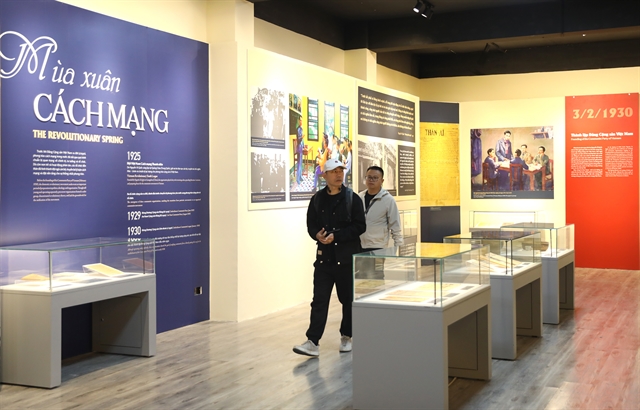

.jpg)
